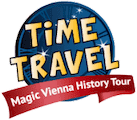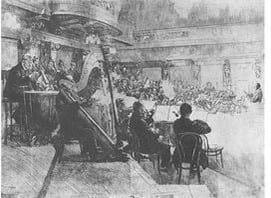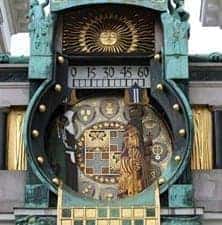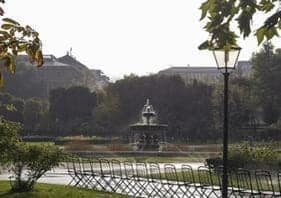When and by whom was the Vienna Philharmonic Orchestra founded? Where does the annual New Year’s Concert take place and since when has the concert existed?
The Vienna Philharmonic Orchestra was born on March 28, 1842 , when Kapellmeister Otto Nicolai conducted a “Grand Concert” in the Redoutensaal . It was organized by the “Sämmtliches Orchester Personal des k.k. Court Opera Theater”. Until then, the city did not have a concert orchestra consisting of professional musicians.
At first it was called the “Philharmonic Academy” and for the first time all the principles of the “Philharmonic Idea”, which is still valid today, were realized. The most important principle: only an artist engaged in the Vienna State Opera Orchestra can become a member of the Vienna Philharmonic.
With the 1870/71 season, the orchestra moved to the Golden Hall of the Musikverein building in Vienna, which proved to be an ideal venue due to its excellent acoustics. Under the conductor Hans Richter (subscription conductor from 1883-1898), the orchestra gained great reputation and worked with Anton Bruckner, Johannes Brahms and Richard Wagner .
The first meeting between Johann Strauss Sohn and the Vienna Philharmonic Orchestra immediately brought the premiere of the waltz “Wiener Blut,” which Strauss composed for the Opera Ball of that year in 1873. This took place in the large Musikverein hall.
The last time he met Strauss was on May 22, 1899 at the Hofoper when he conducted “Die Fledermaus”, contracted pneumonia and died of the consequences less than two weeks later.
Gustav Mahler was also an important subscription conductor from 1898 to 1901.He provided international guest appearances. In 1922, the orchestra played at the first opera performances of the Salzburg Festival.
The origins of the Vienna New Year’s Concert date back to a dark period in Austria’s history. The Philharmonic gave a concert on New Year’s Eve 1939, the net proceeds of which were dedicated to the National Socialist fundraising campaign Kriegswinterhilfswerk, making it highly ambivalent.
From January 1, 1941, in the midst of the war, the concert was understood as a “genuine Viennese celebration of joy.” It is predominantly dedicated to the Strauss dynasty. It was only after the war that the concerts were given the name New Year’s Concert.
To this day, the waltz “An der schönen blauen Donau” and the “Radetzky March” are encores at the end of the New Year’s concert.
Many famous conductors stood at the podium of the New Year’s Concert, the longest was Willi Boskovsky, who conducted the concert for 25 years. Nowadays, the line is changed annually. The concert will be broadcast in 90 countries worldwide and the approximately 2,000 tickets will be allocated through a fair system of lottery.
Time Travel Tip: A guided tour or a concert visit in the Golden Hall of the Musikverein is highly recommended!
More info: Music club




